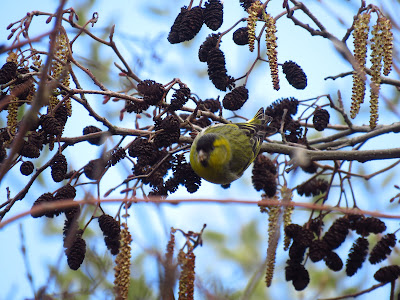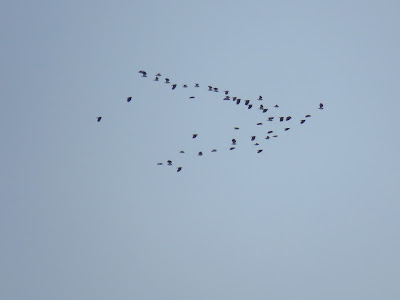Monday 27 February 2023
East Park in February
Sunday 26 February 2023
Sewerby Hall and cliffs with Hull Nats
An unexpectedly sunny day, milder than we expected thanks to the shelter of the woodland and cliffs from the northerly wind. After assembling in the car park we took a walk around the woodland. The first surprise was the Nuthatch feeding on a wall where people had left some seed. It was unfortunately too fast for photos. An area of the gardens holds a stunning grove of Monkey-puzzle tree, Araucaria araucana, with three large individuals, planted in 1868, and several smaller ones of different sizes. A fourth mature tree was blown during the infamous 'beast from the East' in March 2018. Its wood was used in carved panels lining paths to enhance the grounds carved by Allen Stichler.
We descended the steep steps to the beach. A Rock Pipit was feeding at the bottom of the chalk, and moved forward as we did, visiting the mounds of soil generated by cliff falls. I managed a couple of record shots. I had a bit of a lovely surprise when I got home and checked the photos, as the bird was colour ringed! I had 2 photos and the light wasn't great, but I had a possible code and a ringing scheme to contact, so I e-mailed the info and today I got the ringing details below. It appears that this is a Norwegian bird, so wintering at Flamborough:
Ring no : Stavanger EP02385, Orange colour ring ZVJ, right tarsus.
A male, hatched 2021 or before, ringing date: 26.9.2021.
Ringing place: Makkevika (62*30'29''N-006*01'37''E) Giske, Giske, Møre & Romsdal, Norway.
Remarks: Caught in walk-in-trap.
Ringer: Kjell Mork Soot / Sunnmøre Ringing Group.
A Pied Wagtail feeding at the top of the beach.
Seven Great Black-backed Gulls amongst Herring gulls. A few Common Gulls ], Black-headed Gulls, a Redshank and some Oystercatchers were also feeding on the exposed intertidal.
Tuesday 21 February 2023
Noddle Hill, Midmeredales and Foredyke Green in February
It was a great day for raptors. A Buzzard flew low over the reserve (top shot). Later, I heard the mewing of Buzzards and there were four soaring, at some point joined by a Sparrowhawk. At some point two came together and locked talons in a heart-stopping display, of which I only got a blurry shot.
I can't believe I'm at 80 species at Hull for my low carbon birding year, with Tree Sparrow, Lapwing and Yellowhammer added today.

























































